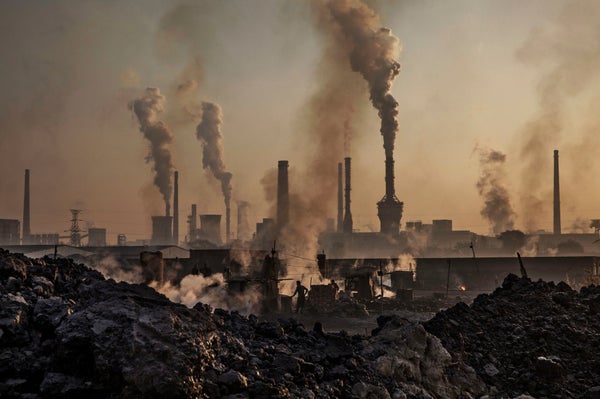SAN FRANCISCO—Despite President-elect Donald Trump’s distaste for the Paris climate agreement, countries around the world are already working to ensure that the global temperature rise stays below 2 degrees Celsius. This week at the American Geophysical Union (AGU) conference here, several prominent scientists discussed the critical steps researchers and decision makers need to take now. They said reducing carbon emissions is important, of course, but countries worldwide must also put more energy into adapting to changing weather that even moderate warming will bring, as well as consider the potential of controversial geoengineering techniques to keep warming in check.
One of the primary goals of the Paris accord is mitigation—cutting or preventing greenhouse gas emissions.To help countries meet their emissions pledges, the international community needs to analyze how it can achieve “deep decarbonization,” according to Margaret Leinen, director of the Scripps Institution of Oceanography and president of the AGU. This means determining what emissions-reducing technologies and strategies will work best for a given country. As Leinen explained at a conference panel session, “We need to be able to evaluate these technologies quantitatively in order to understand which ones work, which ones are scalable and for what countries and energy economies they work for.”
Another major detail that still needs to be sorted out: how to track nations’ emissions, to make sure they’re sticking to their reduction targets. “We need to start asking, ‘Okay, how will you prove that you actually did what you pledged to do?’” Leinen told Scientific American after the panel. To do that, countries will have to have some kind of monitoring system, and the international community has yet to agree on the guidelines for how that system will work.
On supporting science journalism
If you're enjoying this article, consider supporting our award-winning journalism by subscribing. By purchasing a subscription you are helping to ensure the future of impactful stories about the discoveries and ideas shaping our world today.
It is up to scientists and engineers to design effective monitoring systems, or strengthen existing ones. Researchers on the AGU panel said that such a system could end up being a combination of satellites; land-based technology such as towers equipped with greenhouse gas sensors; and possibly mobile technology such as drones that detect emissions. Such a system will be fundamental. “Transparency and monitoring was key to halting the nuclear arms race,” Antonio Busalacchi, president of the University Corporation for Atmospheric Research, told Scientific American. “Similarly, monitoring is going to be key for seeing how well countries are doing on their commitments.”
Nations will also have to focus on adaptation, however—helping communities cope with the effects of climate change, such as flooding and drought. More research is needed because the scientific community has somewhat neglected the topic, Busalacchi said. “If you talk about adaptation in some sectors of the university environment, you get criticized because you're detracting from important mitigation research,” he explained to Scientific American. “But change is coming, and we have to be prepared for it.” The panel emphasized that scientists need a better fundamental understanding of adaptation. For instance, they “need to rigorously study the limits of adaptation,” said climate scientist Carlos Nobre, one of Brazil’s top climate scientists. Antonio Busalacchi thinks researchers should also develop a climate information service so that communities can make sound decisions on how to prepare for and adapt to climate change. The service might help urban areas plan for instance, how high they should build a seawall or how big their storm sewers should be.
Finally, the scientific community has to pay more serious attention to geoengineering, which is the man-mademanipulation of Earth’s natural processes to control the climate. “It must be part of research going forward,” Busalacchi said. Scientists should thoroughly assess geoengineering techniques and understand what their impact on the Earth’s systems might be, including any unintended consequences. They also need to consider logistical challenges—how to actually make geoengineering techniques work, in case the world decides to use them. Then there are political and governance issues, such as how countries should respond if, say, a nation starts injecting sulfate aerosols into the atmosphere on its own to cool the planet. Despite people’s general unease with geoengineering because of its potential for major unintended consequences, it is another tool countries may eventually need to use to combat climate change. “At this point, we need to keep all options open,” Busalacchi said. “We need to have a solid and robust understanding of what geoengineering can and can't do, in case mitigation and adaptation fall short.”
